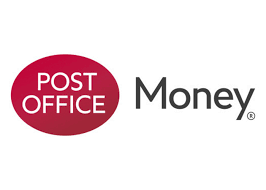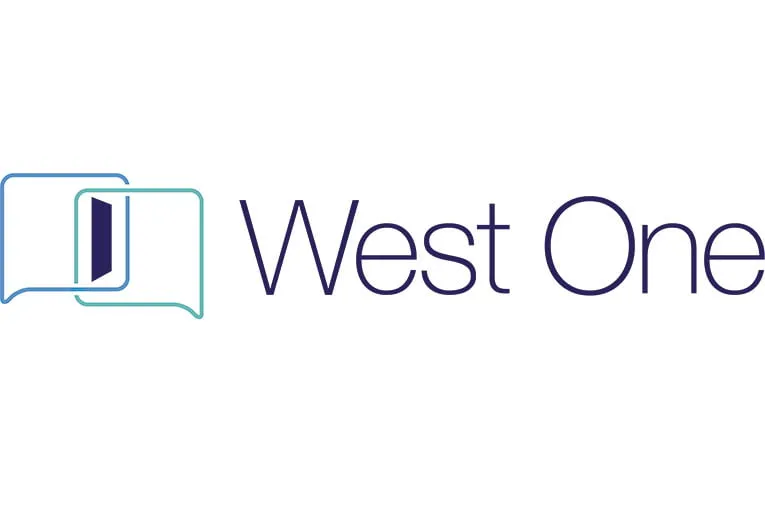Let to Buy Mortgages: What They Are and How They Work
Let to buy mortgages are becoming increasingly popular in the UK, especially for homeowners looking to move house without selling their current property. This mortgage strategy allows you to rent out your existing home while buying a new one to live in, all without getting stuck in a long property chain or rushed sale.
A key benefit of let to buy is that it enables you to own two properties at once, giving you the advantage of generating rental income from your old home while securing your next property.
But how exactly do Let to buy mortgages work? How are they different from buy to let mortgages? Who is this product designed for, and what are the advantages and potential risks?
In this guide, we’ll explain everything you need to know about Let to buy, including comparisons with buy to let, benefits, eligibility, common lenders, and how to use this financial strategy effectively.
What Is a Let to Buy Mortgage?
A let to buy mortgage involves changing your current residential mortgage into a buy to let mortgage, so you can rent out your home. At the same time, you take out a new residential mortgage to purchase your next home. This way, you’re not relying on the sale of your old home to finance your next move.
This dual arrangement allows you to:
- Let out your current property
- Release equity to use as a deposit for your new home
- Secure a residential mortgage on the new property you’ll live in
This solution is ideal if you’re moving for work, want to keep your existing home as an investment, or simply don’t want to sell right away due to market conditions, and can afford to support two mortgages or a new property purchase without selling immediately.
Let to Buy vs Buy to Let: What’s the Difference?
It’s easy to confuse let to buy and buy to let mortgages, but they serve different purposes. In this context, ‘buy means’ refers to the purpose of the mortgage whether it’s for letting out a property or buying a new home to live in.
A buy to let mortgage is used when you purchase a property with the intention of renting it out from the start. These mortgages are typically interest-only and are assessed based on expected rental income, not your personal income.
In contrast, a let to buy mortgage starts with a home you already live in. You convert it to a rental property and remortgage it accordingly. Then, you take out a separate residential mortgage for a new property. Lenders may assess let to buy mortgages on a ‘buy basis’, which can affect how much you can borrow and the terms offered. You’re essentially becoming a landlord and a homebuyer at the same time.
This approach allows you to:
- Keep your current home as a long-term investment
- Avoid selling in a weak market
- Move into a new home faster, without waiting for a buyer
Who Is Let to Buy For?
Let to buy isn’t suitable for everyone, but it’s a strong option for homeowners in certain situations. Here are some typical scenarios:
1. People Relocating Quickly
If you’re moving for a job, family reasons, or lifestyle changes, let to buy lets you purchase a new house and rent out your old one without needing to sell first.
2. Couples Moving in Together
If two people each own a property and decide to move in together, one of the homes can be let out using a let to buy mortgage, helping fund the joint new purchase.
Letting out one property can also affect ownership responsibilities and may have tax implications, so it is important to consider how changes in ownership could impact your financial and legal obligations.
3. Investors Building a Portfolio
Let to buy is a common first step into property investment. You’re using a home you already know to become a landlord, making the transition less risky.
As an investor, you can also benefit from any increase in property value over time, which can enhance your long-term returns and provide more options for leveraging equity.
4. Owners Delaying Sale for Better Market Timing
If the market is slow, you can rent out your home temporarily while waiting for house prices to rise, this can increase the value of your property when you eventually sell.
Understanding the Let to Buy Mortgage Process
The let to buy mortgage process is all about turning your existing property into a rental investment while securing a new home for yourself. Here’s how it typically works, you switch your current residential mortgage to a let-to-buy mortgage deal, which allows you to legally rent out your old home. At the same time, you apply for a new residential mortgage to purchase your next property.
Lenders will look closely at the potential rental income from your existing property, as this income is used to help cover the repayments on your let to buy mortgage. They’ll also assess your personal income and outgoings to determine how much you can borrow for your new property. Managing two properties means you’ll need to keep track of two mortgages, but the rental income from your old home can make this more manageable.
Navigating the let to buy process can be complex, as you’re dealing with two mortgage applications and the responsibilities of both a landlord and a homebuyer. Understanding each step and how your income, rental income, and property values affect your options will help you make informed decisions as you move into your next home.
Types of Let to Buy Mortgages
Let to buy mortgages come in several forms, each with its own lending criteria and features. Some lenders offer fixed-rate let to buy mortgages, which provide predictable monthly payments for a set period. Others may offer variable or tracker rates, where your payments can change in line with interest rates. The right type of let to buy mortgage for you will depend on your financial goals, risk tolerance, and whether you prefer stability or flexibility.
Most lenders require a minimum deposit, usually around 25% of your property’s value and a solid credit history. Lending criteria can vary, so it’s important to compare options and understand what each lender is looking for. Consulting a mortgage broker who specialises in let to buy mortgages can help you navigate these requirements and find a deal that matches your investment plans. Whether you’re looking for a short-term solution or a long-term investment, there’s likely a let-to-buy mortgage to suit your needs.
Benefits of Let to Buy Mortgages
Let to buy mortgages come with several advantages, particularly if you’re in the right financial and personal position:
For example, imagine a homeowner who wants to move to a new city for work but doesn’t want to sell their current property. With a let to buy mortgage, they can rent out their existing home and use the rental income to help secure a new mortgage for their next property. This allows them to move without selling and potentially benefit from property value growth on both homes.
Faster Moves with Less Stress
Because you’re not waiting to sell your home, you can buy your new property without being in a chain. This makes the entire process more flexible and less stressful.
Equity Unlocking for Your Deposit
By remortgaging your current home as a buy to let, you can release equity. This released equity can then be used as your next deposit for your new residential purchase.
Rental Income to Cover the Mortgage
The rental income from your existing property can cover the monthly payments on the buy to let mortgage, helping ensure you have enough money to meet your mortgage obligations.
Long-Term Investment Growth
You now own two properties both of which could increase in value over time. It’s a smart way to start or grow a property portfolio.
However, keep in mind that owning a second home through let-to-buy can have tax implications, such as higher Stamp Duty charges.
Rental Property Considerations
When you rent out your existing property, there are several important factors to keep in mind. First, consider the potential rental income will it be enough to cover your let to buy mortgage payments and provide a buffer for unexpected costs? You’ll also need to budget for ongoing property maintenance, repairs, and any periods when the property might be empty (known as void periods).
As a landlord, you’re responsible for ensuring your rental property meets all safety and legal standards, from gas and electrical checks to smoke alarms and tenant deposits. You may choose to manage the property yourself or use a letting agent, which comes with additional fees. Don’t forget to factor in the cost of landlord insurance and regular upkeep.
Balancing the benefits of rental income against the responsibilities and costs of being a landlord is key. Make sure you have a plan in place to cover your mortgage and other expenses, even if your property is temporarily without a tenant.
Things to Consider (and Risks to Be Aware Of)
While let to buy can be a great option, it also comes with some key considerations and risks. You may need to have paid the appropriate stamp duty when purchasing a second property.
5.2 Lending Criteria and Eligibility
- Lenders may have a maximum age limit for applicants, often around 75 years old.
- Each lender has their own rules regarding eligibility for let to buy mortgages, so it’s important to check specific requirements.
- You may need to take out a standard residential mortgage on your new home as part of the let-to-buy arrangement.
5.3 Stamp Duty and Tax Implications
When you keep your original property and purchase a second property, you may be subject to the higher rate of stamp duty for additional properties. This can significantly increase the upfront costs, so it’s important to factor this into your budget.
5.4 Legal and Administrative Responsibilities
Letting out your property means you’ll need to comply with landlord regulations, arrange appropriate insurance, and manage tenants. You may also need to transfer ownership of the property for tax or legal reasons.
You’ll Be Managing Two Mortgages
Taking on two mortgages means higher financial responsibility. Make sure your income and future plans support this.
Let-to-Buy Criteria Can Be Strict
Lenders typically require you to:
- Have at least 25% equity in your current home
- Show that the rental income covers 125–145% of the new mortgage interest
- Provide a formal rental valuation
- Show evidence of a new residential purchase in progress
Stamp Duty Surcharge
Let to buy buyers usually pay a 5% stamp duty surcharge on the new property because technically you own two homes. This extra cost can be refunded if you sell your old home within 36 months.
Landlord Responsibilities
As a landlord, you must comply with regulations, maintain the property, manage tenants, and declare rental income on your tax return. You should factor in costs for letting agents, insurance, and potential void periods.
Lenders Offering Let-to-Buy Mortgages
Here’s a breakdown of some lenders both high street and specialist that may offer suitable mortgage products for let-to-buy arrangements:
Lenders and mortgage brokers work closely with customers to help them find the best let-to-buy mortgage options.
High Street Lenders
| Lender | Max Loan-to-Value (LTV) | Notes |
|---|---|---|
| HSBC | Up to 75% | Requires strong credit score and affordability property must be rented out under a let-to-buy arrangement |
| Santander | Up to 75% | Considers a wide range of properties; new purchase must be a residential property |
| Barclays | Up to 75% | May support first-time landlords |
| NatWest | Up to 75% | Offers flexible terms for existing homeowners |
Specialist Lenders
| Lender | Strengths |
|---|---|
| The Mortgage Works | Known for supporting let-to-buy and complex applications |
| Accord Mortgages | Flexible criteria and higher LTV options |
| BM Solutions | Let-to-buy-specific mortgage products |
| West One Loans | Offers custom terms for portfolio landlords |
| Godiva Mortgages | Supports new builds, new residential property purchases, and non-standard properties |
These lenders typically require you to work through a mortgage broker, especially if you’re applying for both mortgages at the same time.
Mortgage Rates and Options
Let to buy mortgage rates are generally higher than those for standard residential mortgages, reflecting the increased risk for lenders when you own two properties. However, some lenders offer competitive buy mortgage rates and flexible terms, so it’s worth shopping around. When comparing let to buy mortgages, pay close attention to the interest rates, arrangement fees, and any early repayment charges.
If you have enough equity in your existing property, you may be able to release some of it to use as a deposit for your new home. This can make it easier to secure a good mortgage deal on your next property. Comparing offers from multiple lenders is essential, as rates and criteria can vary widely.
A mortgage broker can be invaluable in this process, helping you find the best let to buy mortgage rates and guiding you through the application process. With the right advice, you can secure a mortgage deal that fits your budget and supports your move to a new home while keeping your investment on track.
Do You Need a Mortgage Broker for Let to Buy?
In most cases, yes. Let to buy involves two mortgage applications running in parallel, a buy to let remortgage and a residential purchase. A mortgage broker can help you coordinate both, understand lender criteria, and find deals not available directly to the public.
Specialist brokers also help with affordability calculations, rental stress testing, paperwork, and avoiding delays. Using a broker increases your chances of securing the right deals and ensuring the timing works for both mortgages.
Final Thoughts
Let to buy mortgages offer a flexible, strategic route for homeowners who want to move without selling or who want to dip their toes into property investment. While it comes with additional complexity and risk, the long-term rewards can be significant when done right.
If you’re planning a let to buy, speak to a specialist mortgage broker who understands the market and can guide you through the process. From unlocking equity to managing dual mortgages, a broker can help make your move smoother and more financially sound.
Get help from an experienced mortgage broker
You can speak to one of our specialist mortgage brokers who would be able to guide you through the process. They will advise if there is a lender available and the maximum loan amount based on your circumstances. We are a whole of market mortgage brokerage with access to all lenders. Call us on 01332 470400 or complete the form with your details for us to give you a call back.
What our customers say
Marlon
25 Apr 2025
Showing our favourite reviews

Always attentive, helpful and efficient
Jonathan, 27 Jan 2025

Best Mortgage Broker in the UK!
Liam, 26 Nov 2024

Ben was really helpful in helping me…
George, 28 Aug 2024
FAQs
What is a Let-to-Buy mortgage?
A Let-to-Buy mortgage allows you to rent out your current home and simultaneously purchase a new residential property to live in. It involves taking out a buy-to-let mortgage on your existing property and using the equity or rental income to help fund the purchase of your new home.
How is a Let-to-Buy mortgage different from a Buy-to-Let mortgage?
While both involve letting out a property, a Buy-to-Let mortgage is used to purchase a property solely as an investment to rent out. A Let-to-Buy mortgage involves keeping your current home and converting it to a rental while you buy a new one to live in often arranging two mortgages at the same time.
Can I use a Let-to-Buy mortgage if I have little equity in my current home?
Generally, lenders require you to have at least 25% equity in your current property to qualify for a Let-to-Buy mortgage. If your equity is low, you may need to wait until your property value increases or consider a higher deposit on your new purchase.
Do I need to remortgage my current home to Let-to-Buy?
Yes, you’ll usually need to remortgage your existing property onto a buy-to-let mortgage. This is required to meet legal letting obligations and to avoid breaching the terms of your residential mortgage, which typically prohibits renting without consent.
Can I get a Let-to-Buy mortgage if I already own other properties?
Yes, but lenders will assess your overall portfolio, income, and affordability carefully. If you already own multiple properties, you may be considered a portfolio landlord, and some specialist lenders may be more suitable than high street banks.
Ready to Take the First Step?
Whether you’re a first-time buyer, remortgaging, or moving home, bad credit doesn’t have to hold you back.
Understanding credit scoring can help you prepare for a mortgage application. You can speak to one of our specialist mortgage brokers who would be able to guide you through the process. They will advise if there is a lender available and the maximum loan amount based on your circumstances. We are a whole of market mortgage brokerage with access to all lenders.































